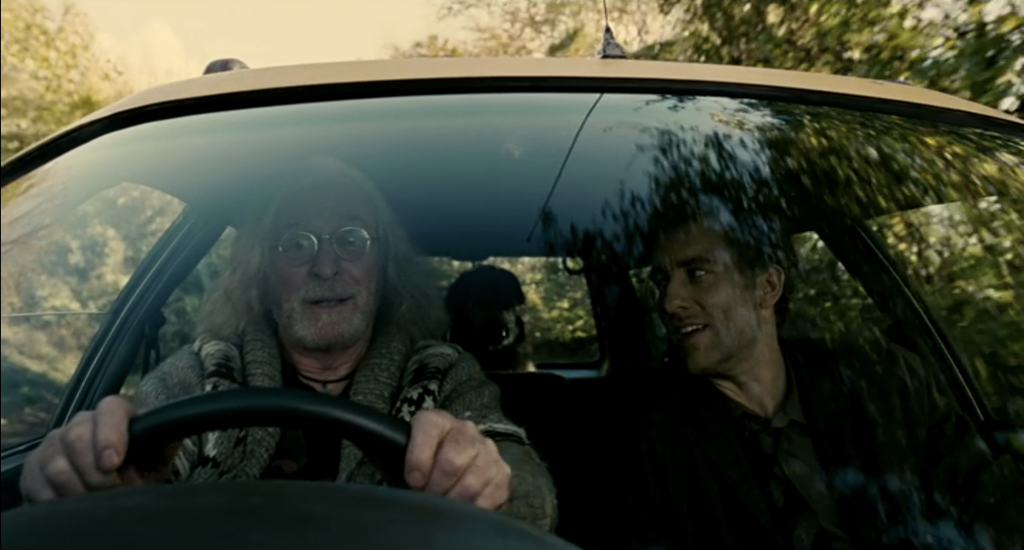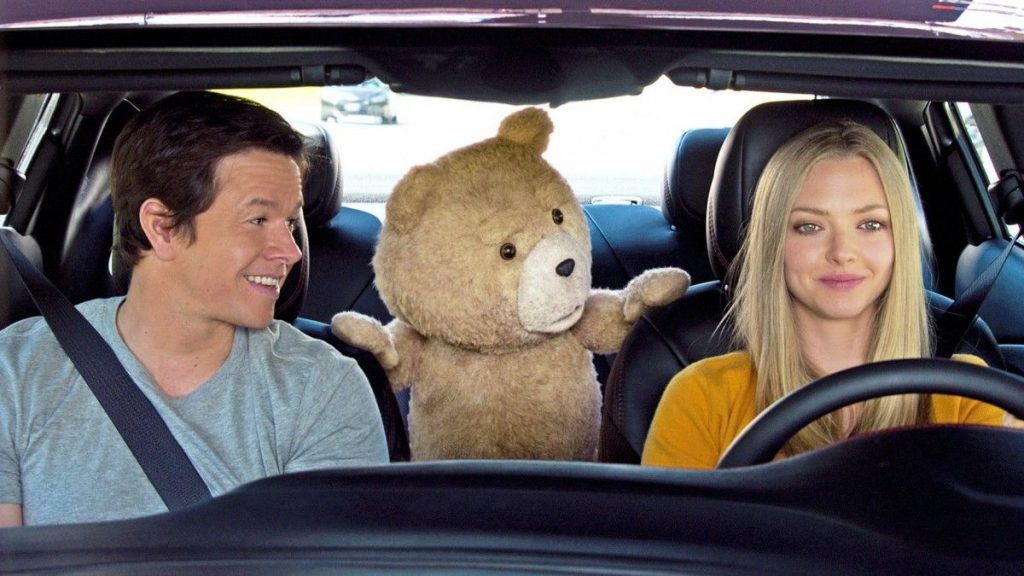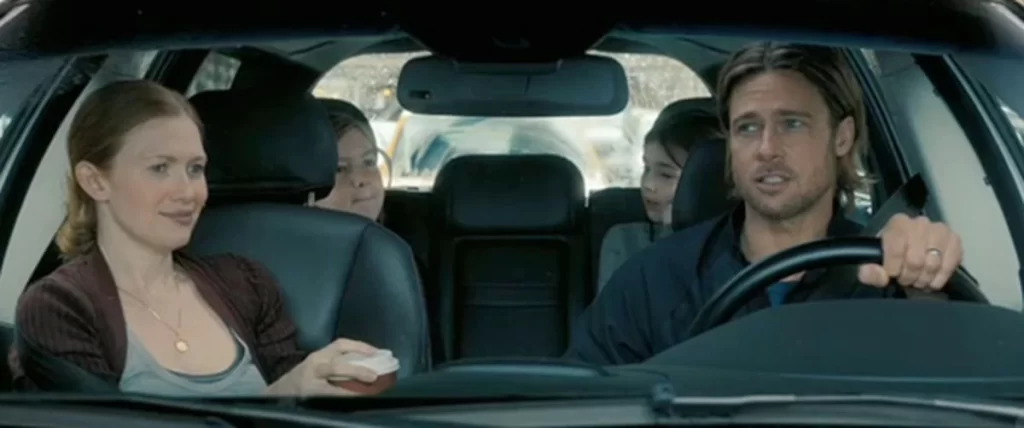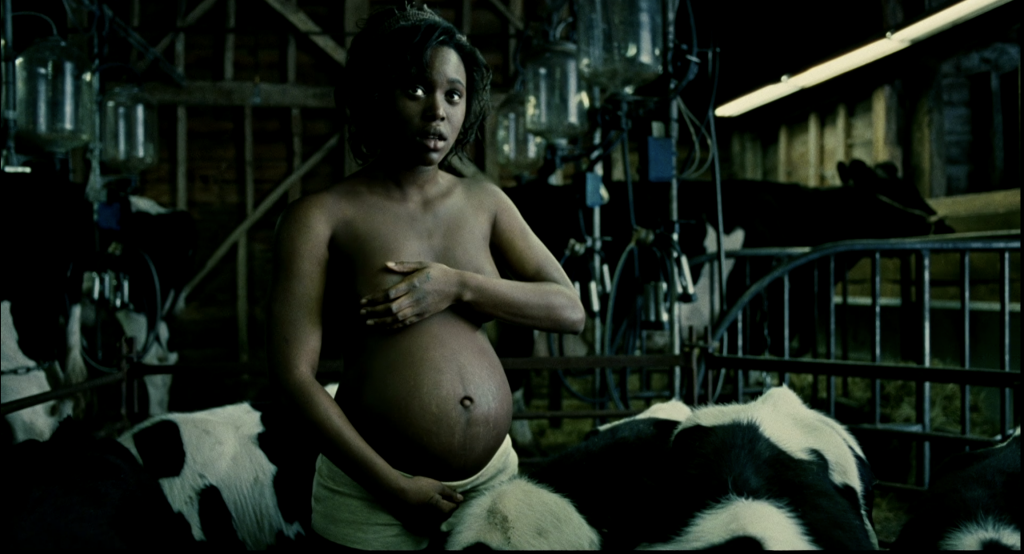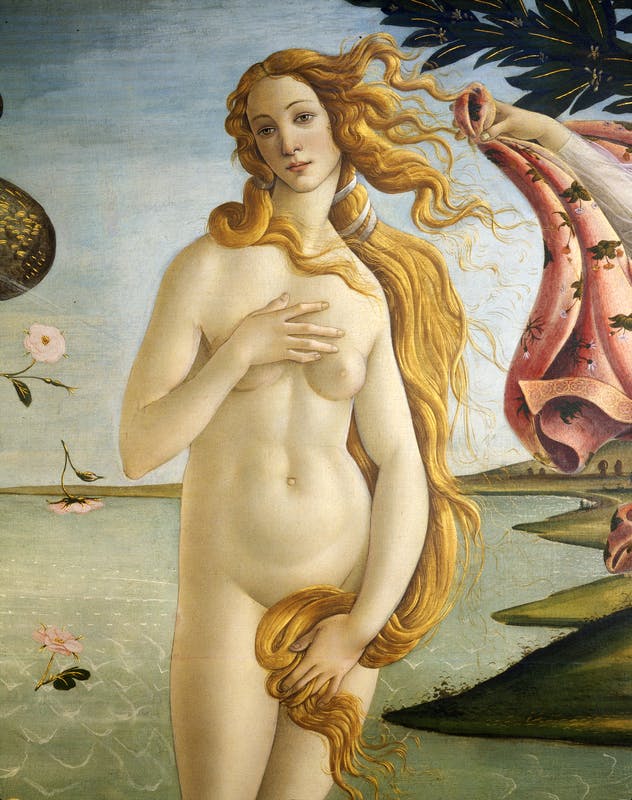Children of Men (2006) dir. by Alfonso Cuarón is a science-fiction action drama that takes place in a Britain in 2027. The world for around 18 years has been infertile, unable to produce children. This dystopian scenario has caused all the worlds countries to collapse with the only surviving nation-state being Britain. Britain has remained intact despite the huge refugee crisis, climate change and infertility as a result of embracing far-right anti-immigration policies. This future Britain is definitely a fascist state. The plot follows Theo, a civil servant, as he is roped in to escorting a refugee called Kee, the first pregnant woman in a long time, to a safe place outside of Britain.
Animals feature prominently throughout the entirety of the film and animal imagery is almost everywhere. The terrorist group that Theo’s ex-wife Julian (Julianne Moore) works and Theo helps to safeguard Kee is called the Fishers. Every Fisher and non-Fisher contact that Theo encounters has a pet dog, whether that be the old woman contact he meets at the dog-races (ever more animal symbolism) or the ‘gypsy’ woman Theo meets in Bexhill Refugee Camp. The secret code used by the Fishers when they want to communicate with people is to hand them a lost dog poster. The phrase that Theo must use to meet his friend Jasper’s (Michael Caine) contact is “You’re a fascist pig.” What can be clearly seen when watching Children of Men is the extent to which animals or animal imagery is used by Cuarón. Animals are used as replacements for children in a world where infertility has struck humans.
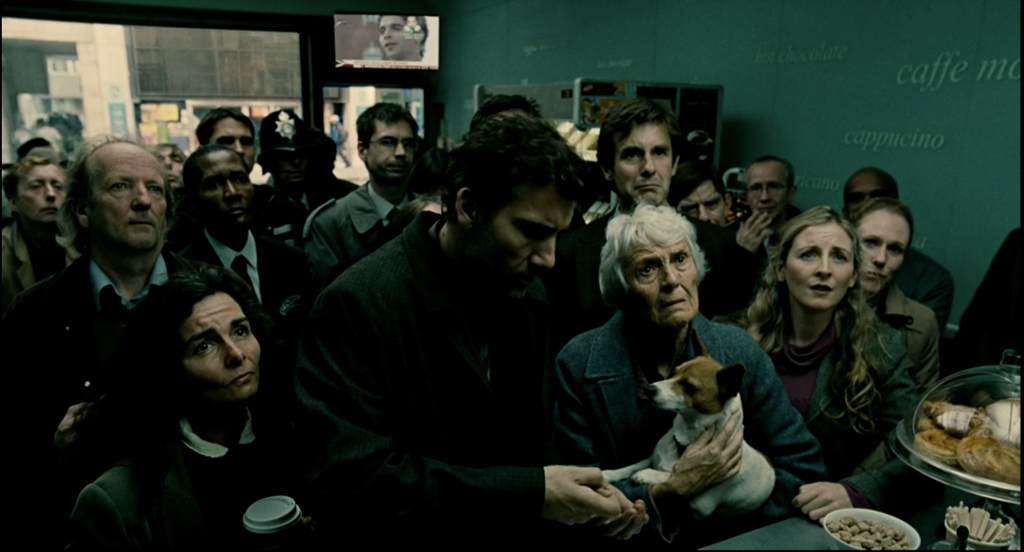
The opening scene of the film shows Theo buying a coffee at a cafe whilst everyone else in the cafe is watching the news. The news is informing us that the youngest person alive has been killed. ‘Baby Diego’ as he was known was the youngest person on the planet. Dogs feature heavily throughout the film and take the place of children, from which the world is absent of. The title sequence is played over a black screen before cutting to inside the cafe. The camera cuts as soon as the newsreader says “the youngest person on the planet.” This reinforces the absence of children in the world. In the foreground an old woman is seen holding a dog like a baby in her arms (Figure 1). She appears to be holding it for comfort as the room finds out that ‘Baby Diego’ has died. This dog remains at the centre of this very long opening shot. It appears to follow Theo walking into the cafe, buying coffee and walking out. This creates an agency for the dog, we see it interested in the affairs of the adult humans; thus it becomes child like. The absence of seeing the dog as a dog (walking on the four legs, on a leash) shifts the audiences perceptions of it to seeing it as more of a human baby than a dog. To compound this sense of dogs as children, as the camera follows Theo out of the cafe, it pans to a medium shot of a London street showing a bus with an advert on it. The advert is for “spring collection” of dog clothes and it features a series of dogs on it. Cuarón’s use of the background is a common theme throughout his films; the wandering camera often focuses on things that the protagonists don’t. This little pan to the bus advert emphasises the empty space that children have left in this world. Animals, particularly dogs, are used by the people of this world as replacements for children.
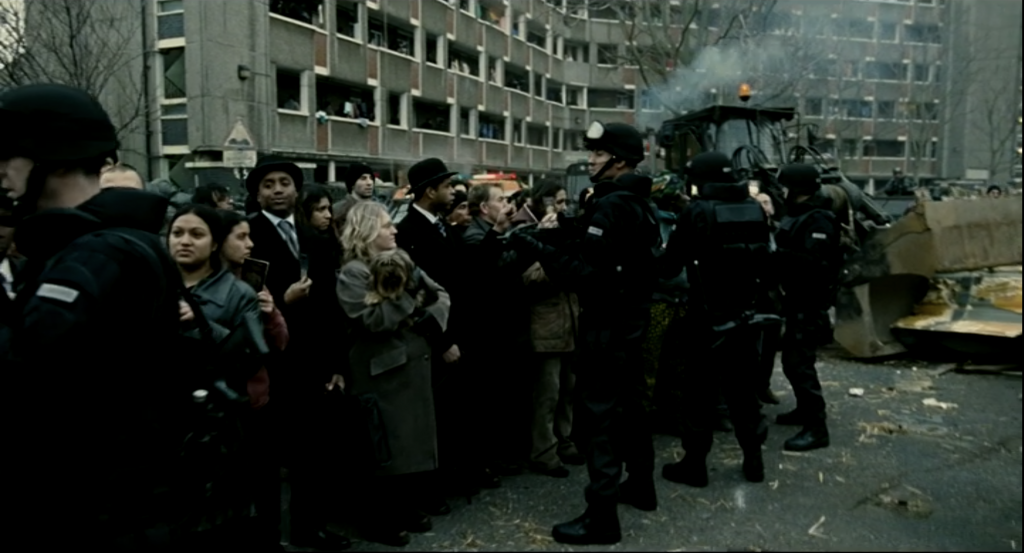
In another one of Cuarón’s wandering background shots, the audience are shown the removal of immigrants from their homes. As Theo walks past the scene, the camera wanders off into the scene showing a crowd of British citizens brandishing their passports being controlled by the police (Figure 2). In the middle of this crowd is another old woman with a dog in her arms. She is holding the dog like a baby. This shot wanders past crowds of people and none of them have children; there is a distinct absence of babies crying. Instead, a police dog barks at people, filling the silence. This juxtaposition of lack of children with animals treated like children emphasises the replacement of children with animals.
Later on in the first half of the film, Theo pays a visit to his friend Jasper who picks him up from a transit station. As they are driving in the car, the audience are shown a shot of a ‘perfect’ nuclear family (Figure 3). It is a close-up shot of the front of the car, the audience viewing the scene through the windscreen. On the left is Jasper driving, the archetypal man/father, on the right in the passenger seat is Theo, the archetypal woman/mother. In between them, instead of sat in the boot (the usual place for a dog during a car journey) Jasper’s dog is sat very still on the backseat representing the archetypal child. This shot is comparable to a number of different media for example the film Ted (2012), itself a parody of traditional family values featuring a stuffed bear, or World War Z (2013). As an audience, our interpretative tendency is to view this scene as representative of domesticity. Cuarón, here, plays with the audiences understanding of domesticity and family. At the centre of the frame, the audiences eyes are always drawn to the dog first. Not only that, but the centrality of the dog suggests importance placed on animals as children. A minute or so later, and Theo and Jasper get out of the car to remove the branches that hide the road to Jaspers house. In this scene as well, Jasper’s dog takes the role of child as it barks and barks until Jasper lets it out. Recognising that barking is a possible way for dogs to communicate with humans, this short sequence reads as the dog asking permission to be let out of the car, again very much like a small child.
Although animals are used as a replacement for children throughout the film, they are also connected to concepts surrounding fertility and motherhood. In a very well-crafted and well-informed shot later on in the film, Kee reveals her pregnancy to Theo standing in the middle of a group of cow calves whilst their mothers are
being milked (Figure 4). In a medium close-up, the camera pans up from the calves to Kee standing in the middle, one arm covering her breasts whilst the other is placed over her crotch. This shot is almost an exact replica of Botticelli’s The Birth of Venus, a painting completed in the mid 1480’s. The comparison with Botticelli’s painting provides a useful insight into the themes of the film. Venus was the Roman goddess of love, sex and fertility amongst other connected concepts. Venus’s conception also speaks to ideas of fertility and sex as it is said she arose out of the foam of Neptune’s cut-off testicle. Kee takes the place of the goddess of fertility here. The presence of the cows and their calves reinforce themes such as fertility and motherhood. The cows are harvested of their milk, the substance that feeds their calves, so that humans can drink milk. Kee is surrounded by these starved calves suggesting that she is surrounded by people who want to harm or use her child. This scene perfectly encapsulates the commodification of motherhood or the adopting of motherhood to meet political aims. Kee comments, as Theo walks towards her in the barn that “they cut off their tits” referring to the cutting off of four out of the eight udders a female cow has so that the milking machine fits. Again, animals are used here to express concepts surrounding fertility and capitalism. The life-source of the cow’s ‘children’ or calves is being cut off so that humans can enjoy it instead. In this situation, Kee is the mother cow and the group that want to use her baby are the humans.
A few minutes later on and the camera is now inside the farm-house that the Fishers are using. We are watching the Fishers decide their next course of action now that Julian is dead. For the third time, in this medium shot, the audience are shown a woman holding a dog in her arms like a baby. This woman is placed at the centre of the frame and whilst she doesn’t have any lines, the dog writhes in her arms drawing the attention of the audience. The Fishers are discussing what to do with Kee’s baby thus the presence of the dog in this scene is used to fill in for the children that should be there. Luke (Chiwetel Ejiofor) suggests that Kee have her baby at the Fisher base and when it is safe, they will take her to the Human Project. Theo doesn’t trust the Fishers and says that Kee needs proper medical care; the Fishers disregard this as nonsense. The moment Kee decides to stay at the Fisher base to have her child, the camera cuts to close-ups of Theo’s face staring at Kee and Kee’s face staring at Theo. The camera then cuts to a close-up shot of Theo’s legs: a kitten is clawing and climbing its way up Theo (Figure 5). The symbolism in this moment could not be clearer. As Kee makes the decision that puts her in danger, the kitten claws at Theo’s leg. The kitten fills the role of child that Kee cannot take because she is pregnant. As the symbol of children, when Theo worries for Kee and her future child, the kitten scratches Theo warning against the dangers that Kee is now in. Its as if Kee’s unborn child is acting through the kitten and warning against staying with the Fishers.
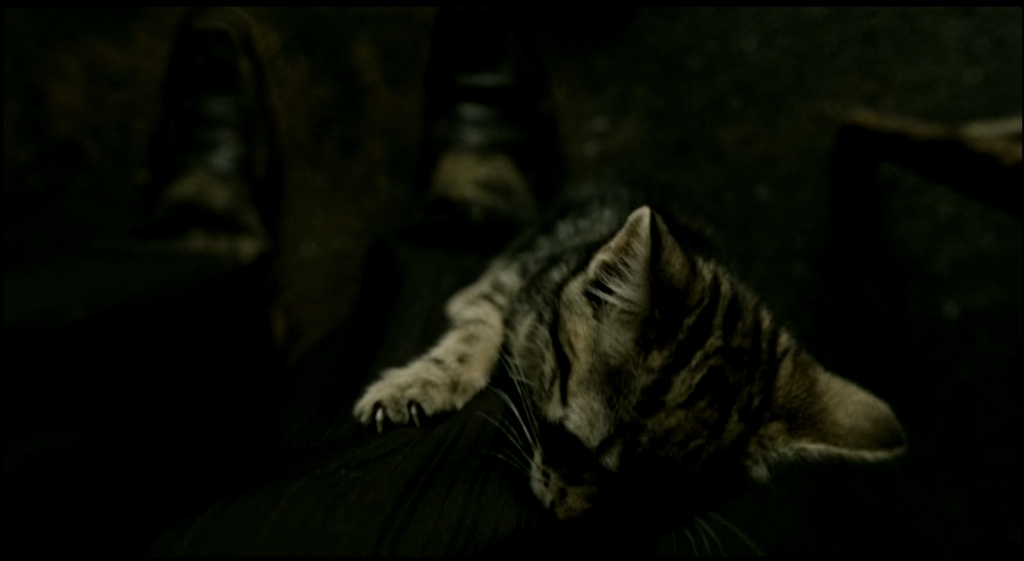
Despite the plot not centring around animals, Cuarón uses animals as background characters. These background characters inform the audience as to the state of the world in Children of Men. Animals appear throughout the film in several different shots as replacements for the children that are absent in the world. Mise-en-scene is primarily used to help emphasise the symbolism of the animals but also Cuarón uses sound. In the absence of any babies crying, dogs barking or goats bleating are used to fill the audio gap. The mise-en-scene places animals either at the centre of frames depicting family life or in the space that a child would fill. They are also used as visual metaphors for fertility and motherhood. Animals throughout the film are intimately connected to ideas of children, family and fertility.
